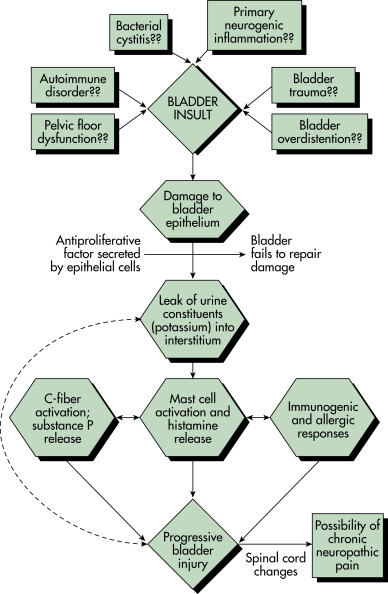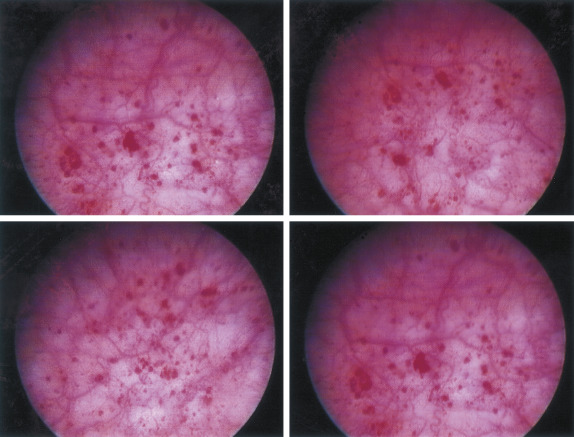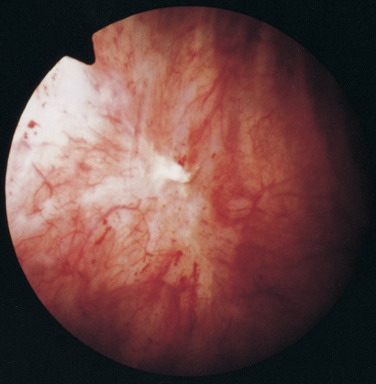AUTHORS: Michael T. Partin, MD, and Karl T. Clebak, MD, MHA, FAAFP
The International Continence Society defines bladder pain syndrome, otherwise known as interstitial cystitis (IC), as a clinical syndrome consisting of suprapubic pain related to bladder filling and accompanied by other symptoms, such as increased daytime and nighttime frequency in the absence of proven infection or other obvious pathology.1 The American Urological Association defines interstitial cystitis/bladder pain syndrome (IC/BPS) as an unpleasant sensation perceived to be related to the urinary bladder that is associated with lower urinary tract symptoms >6 wk duration, in the absence of infection or other unidentifiable causes.2
Interstitial cystitis/bladder pain syndrome (IC/BPS)
| ||||||||||||||||||||
- An estimated 1.2 million women and 82,000 men in the U.S. have interstitial cystitis/painful bladder syndrome.3
- 197 per 100,000 women and 41 per 100,000 men in the U.S.
- Because the disease is substantially underdiagnosed, it may actually affect 1 in 5 women and 1 in 20 men.
- More than 81% of women diagnosed with chronic pelvic pain and up to 84% of men initially diagnosed with chronic prostatitis actually have IC.
- More than 90% of patients diagnosed with overactive bladder who do not respond to anticholinergics are subsequently diagnosed with IC.
- Urinary urgency, frequency (>8 in daytime), nocturia (>2 at night), and suprapubic pain are the most common symptoms
- Suprapubic pain is worse with bladder filling or urinating and relieved after emptying
- Dyspareunia and sexual dysfunction
- Symptoms lasting longer than 6 mo
- Intensity of symptoms waxes and wanes
- Insidious onset and worsens to the final stage within 5 to 15 yr
- Exercise, stress, sexual activity, ejaculation, certain foods with high potassium and acids (e.g., beer, spices, bananas, tomatoes, chocolate, strawberries, artificial sweeteners, oranges, cranberries, caffeine), menstruation, prolonged sitting, and activation of allergies exacerbate the symptoms
- Often associated with irritable bowel syndrome, migraine, endometriosis, skin sensitivities, multiple drug allergies, other allergies, vulvodynia, fibromyalgia, chronic fatigue syndrome, systemic lupus erythematosus, and mood disorders
- Dysphoric mood
- Lower abdominal tenderness
- Tender prostate in digital rectal examination
- Levator ani tenderness in female
- Tenderness of anterior vaginal wall/bladder neck in female



